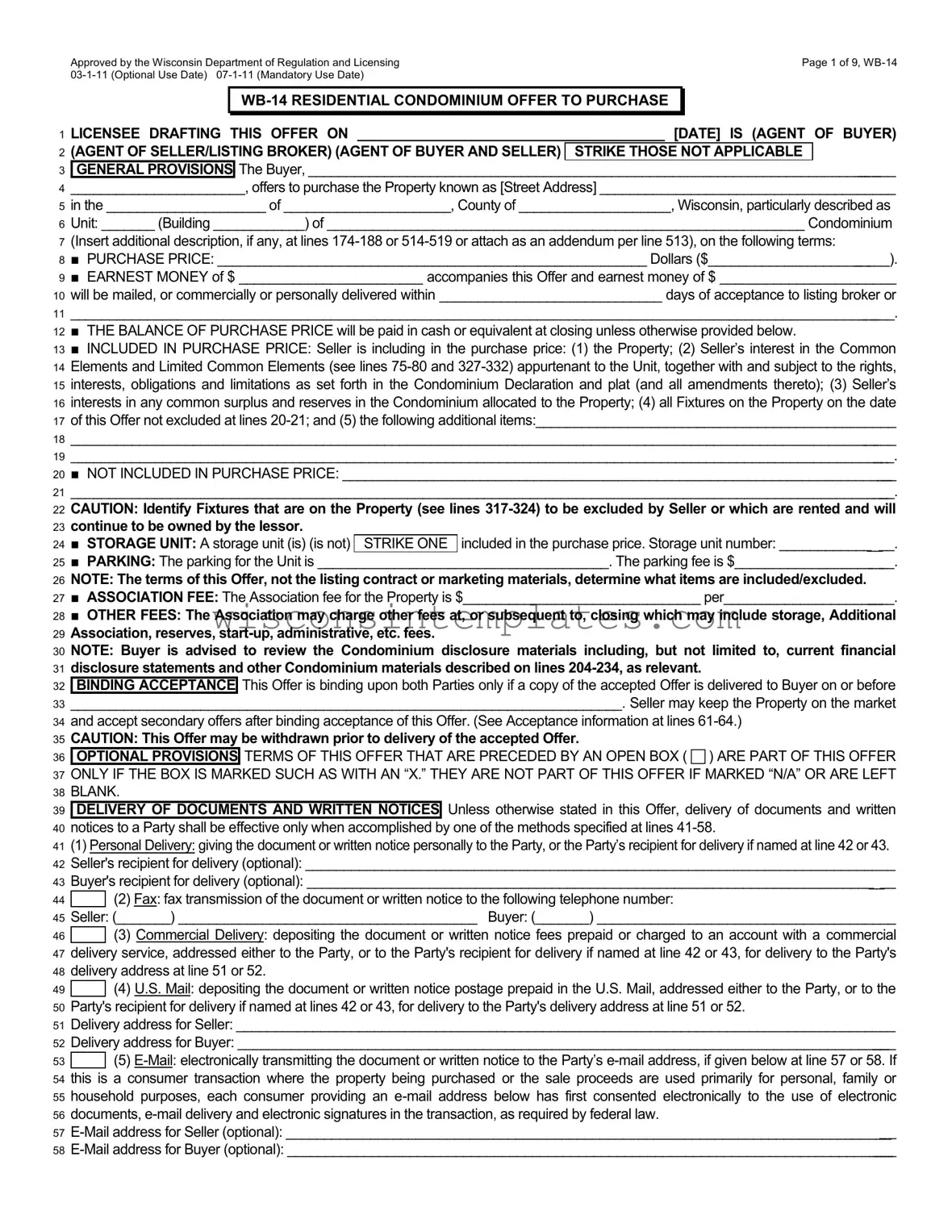The Wisconsin Residential Offer form, specifically the WB-14, is an essential document for anyone looking to purchase a condominium in Wisconsin. This form lays out the terms of the offer, including the purchase price, earnest money, and the specific property details such as the unit number and its location. Buyers must provide a clear description of the property they wish to purchase, including any additional items included in the sale. The form also highlights critical financial aspects, such as the association fees and any other costs that may arise during the transaction. Notably, it addresses the binding acceptance of the offer, ensuring that both parties understand the timeline for acceptance and the implications of any secondary offers. Additionally, the form includes sections for optional provisions, allowing buyers and sellers to customize their agreement based on their unique circumstances. By outlining the responsibilities of both parties, including the delivery of documents and compliance with various regulations, the WB-14 aims to facilitate a smooth transaction while protecting the interests of both the buyer and the seller.
